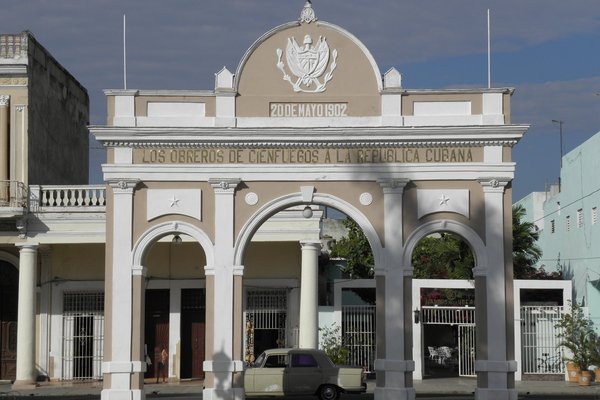Cuba
Cienfuegos
The Urban Historic Centre of Cienfuegos is the best extant example of 19th-century urban planning principles in Latin America.
The homogenous architecture and streetplan of this seaport was influenced by the Spanish Enlightenment and French colonists. New ideas of modernity, hygiene and order were implemented here, and the the streets are of a neo-classic straight and symmetric design, with the use of porches and arcades.
Community Perspective: “the most elegant and prosperous Cuban city”. Visit the Parque José Marti, the central square surrounded by monumental buildings, and the Teatro Tomas Terry.
Site Info
Official Information
- Full Name
- Urban Historic Centre of Cienfuegos (ID: 1202)
- Country
- Cuba
- Status
-
Inscribed 2005
Site history
History of Cienfuegos
- 2005: Inscribed
- Inscribed
- Type
- Cultural
- Criteria
- ii
- iv
Links
- UNESCO
- whc.unesco.org
All Links
UNESCO.org
- whc.unesco.org — whc.unesco.org/
Community Information
- Community Category
- Urban landscape: Colonial
Travel Information
Recent Connections
-
Perfect Inscriptions
2005 -
Medici lions
Two versions outside the Cathedral de l… -
Built or owned by Spanish
The city was founded on April 22, 1819 …
Connections of Cienfuegos
- Geography
-
-
Caribbean Sea
-
Situated in one of the SIDS
Cuba 2005
-
- Trivia
-
-
Built or owned by French
Settled by French immigrants from Bordeaux and Louisiana (1819) -
Built or owned by Spanish
The city was founded on April 22, 1819 by French and Spanish settlers under the command of Don Luis De Clouet y Favrot (wiki)
-
- History
-
-
Medici lions
Two versions outside the Cathedral de la Purisma Concepción in Cienfuegos (built 1833–69) (wiki)
-
- Architecture
- Damaged
- World Heritage Process
-
-
First sites filling gaps cited by ICOMOS
modern towns 2005
-
Perfect Inscriptions
2005
-
- Religion and Belief
-
-
Cathedrals
Catedral de la Purisima Concepción. The two-towered, neo-classical building was finished in 1869 and consecrated as cathedral in 1904.
-
- Human Activity
- Constructions
-
-
Bandstand
At central square -
Theatres and Opera Houses
Teatro Tomás Terry (1890) -
Triumphal Arches
Arco de Triunfo
-
- WHS on Other Lists
-
-
World Monuments Watch (past)
Reina Cemetery (1998)
-
- Timeline
-
-
Built in the 19th Century
laid out in its current form in 1819 with 6 buildings remaining from then until 1850 and a further 327 to 1900
-
- WHS Names
-
-
Named after individual people
The original colony was called "Fernandina de Jagua" after the nearby Castilla de Jagua built by Spain in 1738. It (and the province within which it stands) was later renamed after Cuba's Spanish Captain General (Governor) Don José Cienfuego who had granted the right of settlement to the French-Louisianan émigré Louis de Clouet. NB: some books incorrectly state that it was named after one of Castro's fellow revolutionaries Camilo Cienfuegos!
-
News
No news.
Recent Visitors
Visitors of Cienfuegos
- AC
- Alberto Rodriguez Gutierrez
- Alejandro Lau
- Alexander Barabanov
- Alexander Parsons
- Ali Zingstra
- Ammon Watkins
- Ana Lozano
- Anna Wludarska
- Anne
- Atila Ege
- Aunti
- AYB
- Bauchat
- Bram de Bruin
- Chantal den Haan
- ChrisN
- Christian Wagner
- Claire Bradshaw
- Csaba Nováczky
- ctravel
- CynthiaSam
- CynthiaW
- czesioszpachelka
- Daniela Hohmann
- Deffra
- Dimitrios Polychronopoulos
- Els Slots
- Ertai
- Eva Kisgyorgy
- Fan Yibo
- Felicité
- Femke Roos
- Filip Murlak
- George Gdanski
- GerhardM
- Gernot
- Gjert
- Harry Mitsidis
- headventure
- Iain Jackson
- Ingrid
- IreneKD
- Ivan Rucek
- Jacob Otten
- jballard650
- Jean Lecaillon
- Jens
- Jonas Kremer
- Jon Eshuijs
- Joyce van Soest
- jxrocky
- KarenBMoore
- KateY
- Kerékgyártó
- kiank37
- Lara Adler
- Lembu
- Loic Pedras
- Ludvan
- Luis Filipe Gaspar
- Lukasz Palczewski
- lynnz317@aol.com
- Maciej Gowin
- Malgorzata Kopczynska
- manuel011197
- marcel staron
- MarcoB_0
- Mariam
- Martina Rúčková
- Mateusz
- Mazeman
- MH
- Michael Ayers
- Mikko
- Morodhi
- Nihal Ege
- PabloNorte
- palka25
- Patrik
- Paul Schofield
- petar
- Philipp Leu
- Pieter Dijkshoorn
- Rahelka
- Randi Thomsen
- Reisedachs
- Remski
- Reza
- Riccardo Quaranta
- Roger Ourset
- Roman Bruehwiler
- Roman Raab
- Sabrina Liebehentschel
- Samy G
- saraleonela
- serghei.belous
- sibariam
- Slavi
- Solivagant
- Stanislaw Warwas
- Svein Elias
- Szucs Tamas
- Thomas Buechler
- Thomas van der Walt
- triath
- Vanessa Buechler
- Vsacan
- Wojciech Fedoruk
- Xiquinho Silva
- Zizmondka
- Zoë Sheng
Community Reviews
Show full reviews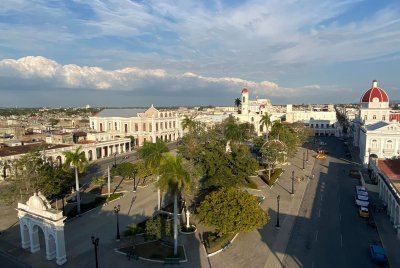
Visited in January 2023.
Cienfuegos, although founded late (1819), quickly became the center of the Cuban sugar industry, an important port through which the sweet gifts of the local nature were exported across the seas and oceans, enriching the local oligarchy. The city does not overlook the Caribbean Sea itself, but stands by the bay (just like Santiago or originally Havana), the narrow entrance to which was conveniently protected from pirates with the help of fortification systems. There is a small fortress here too. UNESCO, however, liked not the fortifications this time, but the urbanism. Cienfuegos is considered the first and one of the best examples of the embodiment of the urban planning ideas of the Spanish Enlightenment in Latin America. The preserved ensemble of classical buildings is really very nice, cozy, spacious and well-kept by Cuban standards. I especially recommend the Palacio Ferrer, where Enrico Caruso once performed, and on the rooftop you can sip daiquris and study the ensemble of the main square. Outside the "old city" is typical dilapidated Cuba.
Keep reading 0 comments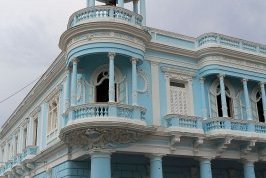
Visited this site in May 2018.
Our visit was slightly shortened by the car breaking, but with some luck, we found local mechanic, who fixed everything in 10 minutes.
The elegant core of the city is concentrated around main square – Parque Jose Marti. The architecture was inspired by the founders – French emigrants. The city is not that old, it was only founded in 1819 and was influenced by the neoclassic ideas of the settlers. The key attractions are Teatro Tomas Terry (1889) with good external mosaics, Arco de Triunfo (1902), Catedral de la Purisima Concepcion Church (1869), Palacio de Gobierno (1917) and Casa de la Cultura Benjamin Duarte or Palacio de Ferrer (1918). For 1 cuc we climbed the latter one, with dominating light blue cupola and iron staircase. There good views over the city, with some usual for Cuba a bit dilapidating impression. Despite the buildings constructed in various periods, together they create quite balanced and harmonic ensemble. We also made a stroll along key shopping and pedestrian street El Bulevar.
We liked Cienfuegos, as it is not usual colonial town, but a later example of neoclassical architecture.
Keep reading 0 comments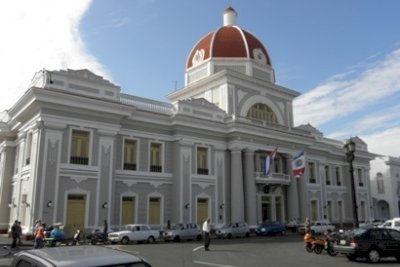
Cienfuegos is the most elegant and prosperous Cuban city that I visited on my trip. Especially its Punta Gorda neighbourhood – palm trees everywhere, wide streets, comfortable-looking houses, a marina. It could be Florida. A very pleasant place to wander about. I also used the city buses, which by western standards are so incredibly cheap that I even wasn’t able to change money so small. My casa owner ended up just giving me some coins. A ride costs 20 centavos in Moneda Nacional, that’s about 0,007 EUR.
The WHS area comprises the historic centre, and then mainly the Parque José Marti, the central square. It has monumental buildings on all sides. These include the iconic City Hall (former Governal Palace and now home to the regional administration), which unfortunately you cannot enter. Next to it is the Provincial Museum, worth a look for its quirkiness but like most museums in Cuba not with a strong collection or presentation. There’s the cathedral, undergoing restorations at the moment and looking much like a construction site. The fine blue turret of the Palacio de Ferrer. The center of the square holds the obligate statues and the quite small Worker’s Arch (a triumphal arch) and a bandshell.
The best sight here undoubtedly is the Teatro Tomas Terry, located on the north side of the square. It opened in 1895. From the outside, it is just one of those big neoclassical buildings that Cienfuegos has in abundance. Its interior is so lovely however. …
Keep reading 0 comments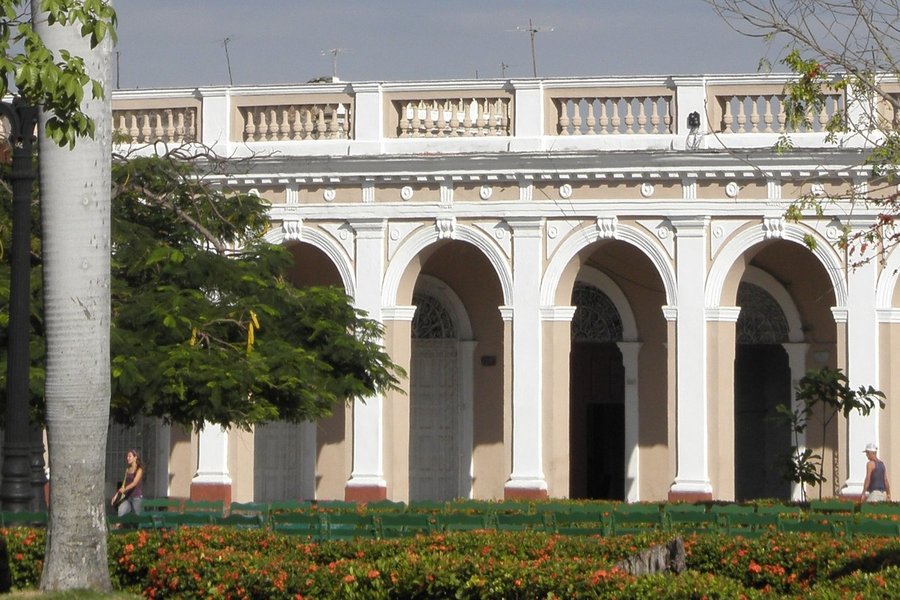
The Urban Historic Centre of Cienfuegos is amazing. The buildings are all being repaired and restored after the hurricane last year. One of my favorite places down there is the Tomas Terry cafe, which has musical groups performing almost nightly. Although, this place is geared more for tourists than some of the other places in Cienfuegos. On Thursday nights there is a Rumba performance for tourists to experience here as well. Also, there are day activities all the time throughout Cienfuegos. You can ask what is going on where and when at the House of Culture, which is also in this square.
You can definitely see the French influence in this square (Parque Jose Marti). I recommend that you take a walk down the streets leading out of this square and explore the city. While it is a positive thing that the facades of buildings are being restored, I think it is important to also focus on the restoration of the inside of buildings. There are so many houses a few streets over, on the Prado, that are historically important, architecturally, that need to be restored and preserved as well.
I was not a tourist in Cienfuegos, I was a student. Because of this, I was able to explore a lot of the city. I would recommend seeing more than just this square but this part of town is definitely worth seeing.
Keep reading 0 comments
